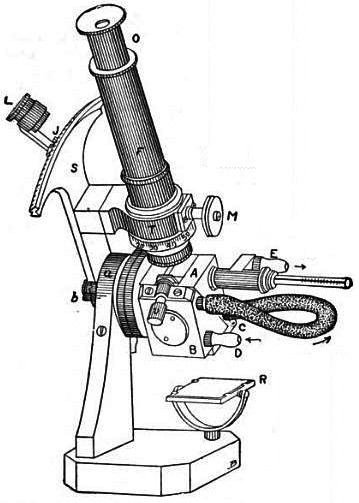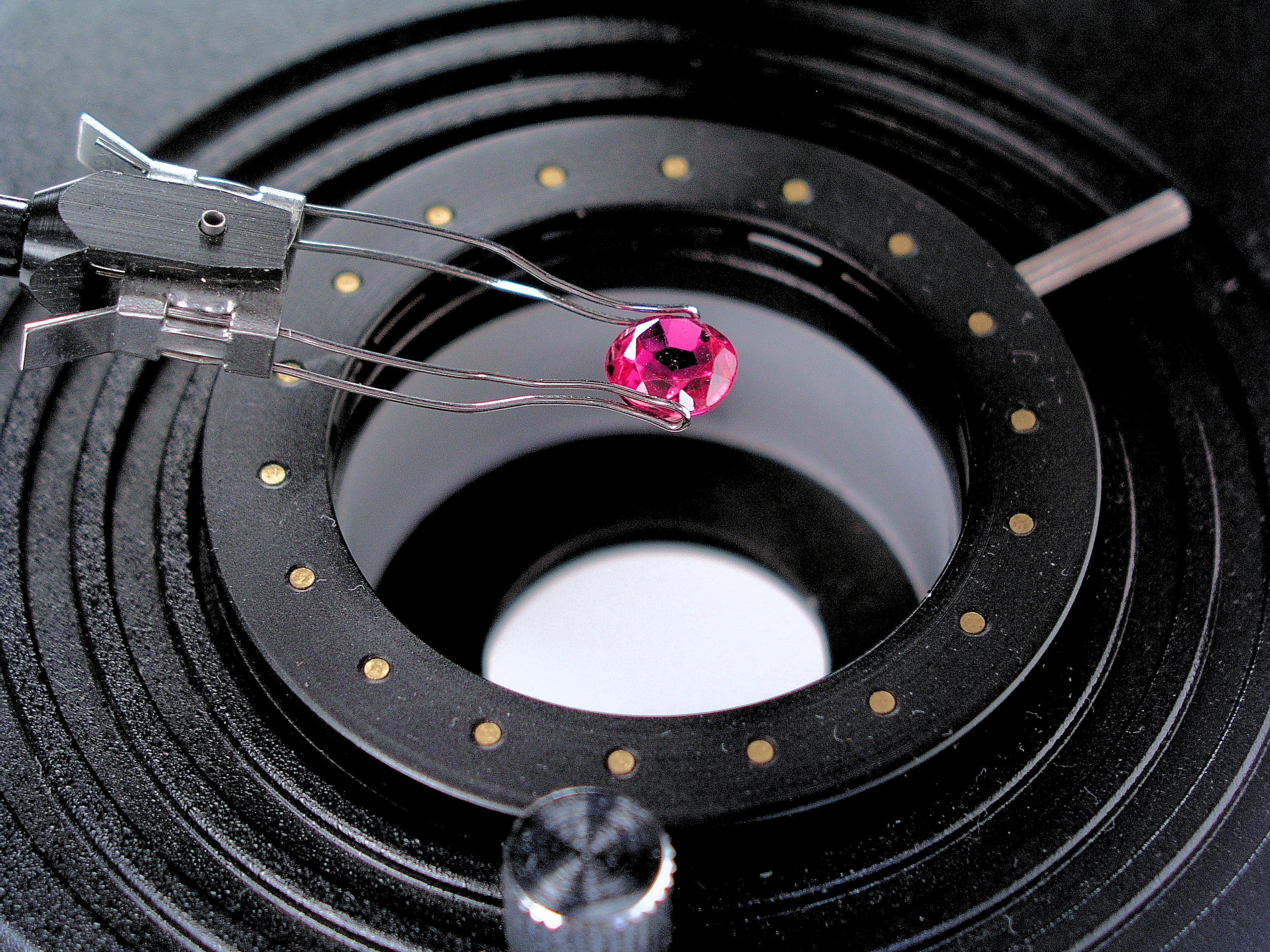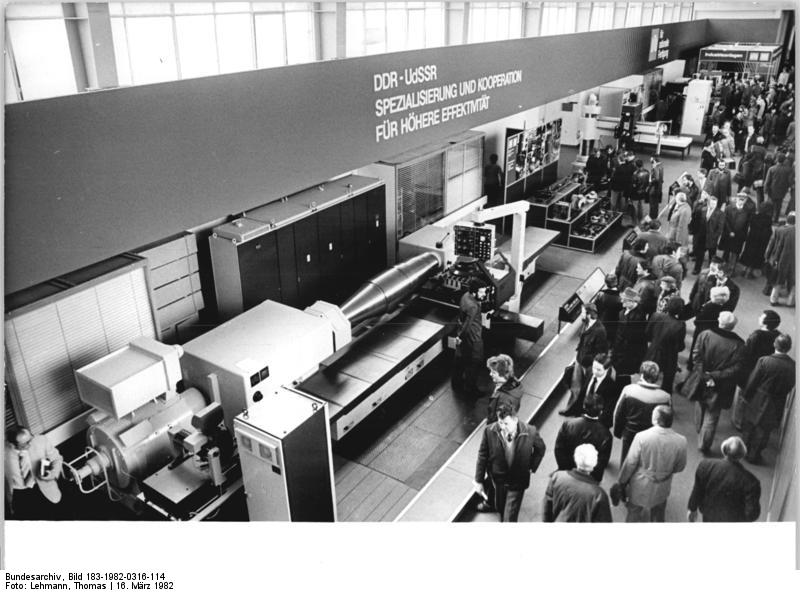|
Refractometer
A refractometer is a laboratory or field device for the measurement of an index of refraction (refractometry). The index of refraction is calculated from the observed refraction angle using Snell's law. For mixtures, the index of refraction then allows to determine the concentration using mixing rules such as the Gladstone–Dale relation and Lorentz–Lorenz equation. Refractometry Standard refractometers measure the extent of light refraction (as part of a refractive index) of transparent substances in either a liquid or solid-state; this is then used in order to identify a liquid sample, analyze the sample's purity, and determine the amount or concentration of dissolved substances within the sample. As light passes through the liquid from the air it will slow down and create a ‘bending’ illusion, the severity of the ‘bend’ will depend on the amount of substance dissolved in the liquid. For example, the amount of sugar in a glass of water. Types There are four ma ... [...More Info...] [...Related Items...] OR: [Wikipedia] [Google] [Baidu] |
Abbe Refractometer
An Abbe refractometer is a bench-top device for the high-precision measurement of an index of refraction. Details Ernst Abbe (1840–1905), working for Carl Zeiss AG in Jena, Germany in the late 19th century, was the first to develop a laboratory refractometer. These first instruments had built-in thermometers and required circulating water to control instrument and fluid temperatures. They also had adjustments for eliminating the effects of dispersion and analog scales from which the readings were taken. In the Abbe refractometer the liquid sample is sandwiched into a thin layer between an illuminating prism and a refracting prism. The refracting prism is made of a glass with a high refractive index (e.g., 1.75) and the refractometer is designed to be used with samples having a refractive index smaller than that of the refracting prism. A light source is projected through the illuminating prism, the bottom surface of which is ground (i.e., roughened like a ground-glass jo ... [...More Info...] [...Related Items...] OR: [Wikipedia] [Google] [Baidu] |
Index Of Refraction
In optics, the refractive index (or refraction index) of an optical medium is a dimensionless number that gives the indication of the light bending ability of that medium. The refractive index determines how much the path of light is bent, or refracted, when entering a material. This is described by Snell's law of refraction, , where ''θ''1 and ''θ''2 are the angle of incidence and angle of refraction, respectively, of a ray crossing the interface between two media with refractive indices ''n''1 and ''n''2. The refractive indices also determine the amount of light that is reflected when reaching the interface, as well as the critical angle for total internal reflection, their intensity (Fresnel's equations) and Brewster's angle. The refractive index can be seen as the factor by which the speed and the wavelength of the radiation are reduced with respect to their vacuum values: the speed of light in a medium is , and similarly the wavelength in that medium is , where ''λ''0 ... [...More Info...] [...Related Items...] OR: [Wikipedia] [Google] [Baidu] |
Refractive Index
In optics, the refractive index (or refraction index) of an optical medium is a dimensionless number that gives the indication of the light bending ability of that medium. The refractive index determines how much the path of light is bent, or refracted, when entering a material. This is described by Snell's law of refraction, , where ''θ''1 and ''θ''2 are the angle of incidence and angle of refraction, respectively, of a ray crossing the interface between two media with refractive indices ''n''1 and ''n''2. The refractive indices also determine the amount of light that is reflected when reaching the interface, as well as the critical angle for total internal reflection, their intensity (Fresnel's equations) and Brewster's angle. The refractive index can be seen as the factor by which the speed and the wavelength of the radiation are reduced with respect to their vacuum values: the speed of light in a medium is , and similarly the wavelength in that medium is , where ''λ ... [...More Info...] [...Related Items...] OR: [Wikipedia] [Google] [Baidu] |
Inline Process Refractometer
Inline process refractometers are a type of refractometer designed for the continuous measurement of a fluid flowing through a pipe or inside a tank. First patented by Carl A. Vossberg Jr.br>US2807976A- Refractometer US2549402A, these refractometers typically consist of a sensor, placed inline with the fluid flow, coupled to a control box. The control box usually provides a digital readout as well as 4-20 mA analog outputs and relay outputs for controlling pumps and valves. Instead of placing the sensor inline of the process, it can be placed in a bypass, attached by a thin tube. This measurement has been an important element in the process control of the chemical and refining, pulp and paper, food, sugar and pharmaceutical industries for more than a century. For instance, the in-line concentration measurement can be used as a real-time predictive tool for the final concentration. A quick and accurate response is needed to optimize production. Cost reduction is possible by redu ... [...More Info...] [...Related Items...] OR: [Wikipedia] [Google] [Baidu] |
Digital Handheld Refractometer
A digital handheld refractometer is an instrument for measuring the refractive index of materials. Principle of operation Most operate on the same general ''critical angle'' principle as a traditional handheld refractometer. The difference is that light from an LED light source is focused on the underside or a prism element. When a liquid sample is applied to the measuring surface of the prism, some of the light is transmitted through the solution and lost, while the remaining light is reflected onto a linear array of photodiodes creating a shadow line. The refractive index is directly related to the position of the shadow line on the photodiodes. Once the position of the shadow line has been automatically determined by the instrument, the internal software will correlate the position to refractive index, or to another unit of measure related to refractive index, and display a digital readout on an LCD or LED scale. The more elements there are in the photodiode array, the more pr ... [...More Info...] [...Related Items...] OR: [Wikipedia] [Google] [Baidu] |
Refractometry
Refractometry is the analytical method of measuring substances' refractive index (one of their fundamental physical properties) in order to, for example, assess their composition or purity. A refractometer is the instrument used to measure refractive index ("RI"). Although refractometers are best known for measuring liquids, they are also used to measure gases and solids; such as glass and gemstones. The RI of a substance is strongly influenced by temperature and the wavelength of light used to measure it, therefore, care must be taken to control or compensate for temperature differences and wavelength. RI measurements are usually reported at a reference temperature of 20 degrees Celsius, which is equal to 68 degrees Fahrenheit, and considered to be room temperature. A reference wavelength of 589.3 nm (the sodium D line) is most often used. Though RI is a dimensionless quantity, it is typically reported as nD20 (or n), where the "n" represents refractive index, the "D" denotes ... [...More Info...] [...Related Items...] OR: [Wikipedia] [Google] [Baidu] |
Traditional Handheld Refractometer
A traditional handheld refractometer is an analog instrument for measuring a liquid's refractive index. It works on the ''critical angle'' principle by which lenses and prisms project a shadow line onto a small glass reticle inside the instrument, which is then viewed by the user through a magnifying eyepiece. In use, a sample is placed between a measuring prism and a small cover plate. Light traveling through the sample is either passed through to the reticle or totally internally reflected. The net effect is that a shadow line forms between the illuminated area and the dark area. It is where this shadow line crosses the scale that a reading is taken. Because refractive index is very temperature dependent, it is important to use a refractometer with automatic temperature compensation. Compensation is accomplished through the use of a small bi-metallic strip A bimetallic strip is used to convert a temperature change into mechanical displacement. The strip consists of two s ... [...More Info...] [...Related Items...] OR: [Wikipedia] [Google] [Baidu] |
Gemology
Gemology or gemmology is the science dealing with natural and artificial gemstone materials. It is a geoscience and a branch of mineralogy. Some jewelers (and many non-jewelers) are academically trained gemologists and are qualified to identify and evaluate gems. History Rudimentary education in gemology for jewellers and gemologists began in the nineteenth century, but the first qualifications were instigated after the National Association of Goldsmiths of Great Britain (NAG) set up a Gemmological Committee for this purpose in 1908. This committee matured into the Gemmological Association of Great Britain (also known as Gem-A), now an educational charity and accredited awarding body with its courses taught worldwide. The first US graduate of Gem-A's diploma course, in 1929, was Robert Shipley, who later established both the Gemological Institute of America and the American Gem Society. There are now several professional schools and associations of gemologists and certificat ... [...More Info...] [...Related Items...] OR: [Wikipedia] [Google] [Baidu] |
Gladstone–Dale Relation
The Gladstone–Dale relation is a mathematical relation used for optical analysis of liquids, the determination of composition from optical measurements. It can also be used to calculate the density of a liquid for use in fluid dynamics (e.g., flow visualization). The relation has also been used to calculate refractive index of glass and minerals in optical mineralogy. Uses In the Gladstone–Dale relation, (n-1)/\rho = \sum km, the index of refraction (n) or the density (ρ in g/cm3) of miscible liquids that are mixed in mass fraction (m) can be calculated from characteristic optical constants (the molar refractivity k in cm3/g) of pure molecular end-members. For example, for any mass (m) of ethanol added to a mass of water, the alcohol content is determined by measuring density or index of refraction (Brix refractometer). Mass (m) per unit volume (V) is the density m/V. Mass is conserved on mixing, but the volume of 1 cm3 of ethanol mixed with 1 cm3 of water is reduc ... [...More Info...] [...Related Items...] OR: [Wikipedia] [Google] [Baidu] |
Marine Aquarium
A marine aquarium is an aquarium that keeps marine plants and animals in a contained environment. Marine aquaria are further subdivided by hobbyists into fish only (FO), fish only with live rock (FOWLR), and reef aquaria. Fish only tanks often showcase large or aggressive marine fish species and generally rely on mechanical and chemical filtration. FOWLR and reef tanks use live rock, a material composed of coral skeletons harboring beneficial nitrogen waste metabolizing bacteria, as a means of more natural biological filtration. Marine fishkeeping is different from its freshwater counterpart because of the fundamental differences in the constitution of saltwater and the resulting differences in the adaptation of its inhabitants. A stable marine aquarium requires more equipment than freshwater systems, and generally requires more stringent water quality monitoring. The inhabitants of a marine aquarium are often difficult to acquire and are usually more expensive than freshwater aq ... [...More Info...] [...Related Items...] OR: [Wikipedia] [Google] [Baidu] |
Automobile Industry
The automotive industry comprises a wide range of companies and organizations involved in the design, development, manufacturing, marketing, and selling of motor vehicles. It is one of the world's largest industries by revenue (from 16 % such as in France up to 40 % to countries like Slovakia). It is also the industry with the highest spending on research & development per firm. The word ''automotive'' comes from the Greek ''autos'' (self), and Latin ''motivus'' (of motion), referring to any form of self-powered vehicle. This term, as proposed by Elmer Sperry (1860-1930), first came into use with reference to automobiles in 1898. History The automotive industry began in the 1860s with hundreds of manufacturers that pioneered the horseless carriage. For many decades, the United States led the world in total automobile production. In 1929, before the Great Depression, the world had 32,028,500 automobiles in use, and the U.S. automobile industry produced over 90% of them. ... [...More Info...] [...Related Items...] OR: [Wikipedia] [Google] [Baidu] |
Machine Industry
The machine industry or machinery industry is a subsector of the industry, that produces and maintains machines for consumers, the industry, and most other companies in the economy. This machine industry traditionally belongs to the heavy industry. Nowadays, many smaller companies in this branch are considered part of the light industry. Most manufacturers in the machinery industry are called machine factories. Overview The machine industry is a subsector of the industry that produces a range of products from power tools, different types of machines, and domestic technology to factory equipment etc. On the one hand the machine industry provides: * The means of production for businesses in the agriculture, mining, industry and construction. * The means of production for public utility, such as equipment for the production and distribution of gas, electricity and water. * A range of supporting equipment for all sectors of the economy, such as equipment for heating, ventilatio ... [...More Info...] [...Related Items...] OR: [Wikipedia] [Google] [Baidu] |





